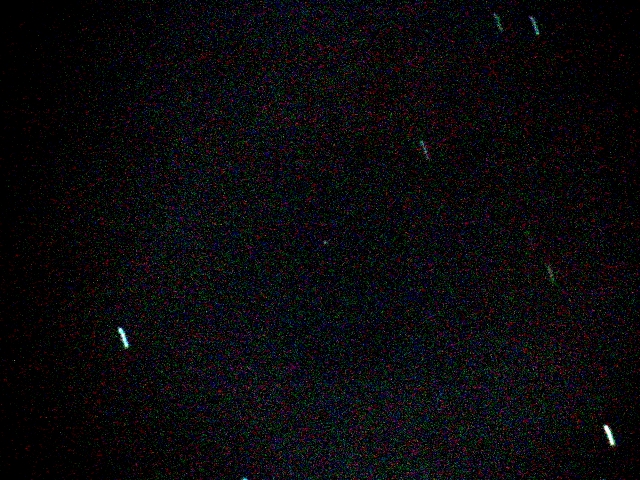
2017/04/19T22:36:51〜22:48:06 8sec*28枚を比較明加算合成
露光時間:8秒*28=03分44秒 t-T=+0秒
Epsilon160/530mm + LPS-P2 + 60D/ISO3200 / EM200Temma
StellaImage6.5で加算合成、レベル補正とリサイズ
|
小惑星2014JO 25
|
|
発見日 2014年5月5日[2]
発見者 マウントレモン・サーベイ
2014 JO25はアポロ群に属される小惑星である。直径は650m程度とみられている[3][4]。 2017年4月19日に地球から約180万kmの位置にまで接近する[3][4]。最接近時は、明るさが11等級になり、小型望遠鏡でも観測する事が出来る[3]。このサイズの小惑星が、次に地球に接近するのは、直径800mの1999 AN10で、2027年8月頃に最接近するとされている[2]。 分類 地球近傍小惑星(NEO)[1] 潜在的に危険な小惑星(PHA)[1] 軌道の種類 小惑星帯 発見 発見日 2014年5月5日 発見者 マウントレモン・サーベイ 軌道要素と性質 元期:2017年2月16日 (JD2457800.5) 軌道長半径 (a) 2.067 AU 近日点距離 (q) 0.237 AU 遠日点距離 (Q) 3.897 AU 離心率 (e) 0.885 公転周期 (P) 2.97 年 軌道傾斜角 (i) 25.238 度 近日点引数 (ω) 49.542 度 昇交点黄経 (Ω) 352.251 度 平均近点角 (M) 30.656 度 物理的性質 650m 反射能0.25 自転周期 時間 絶対等級 (H) 18.1 |
2017年04月19日 11.0等



